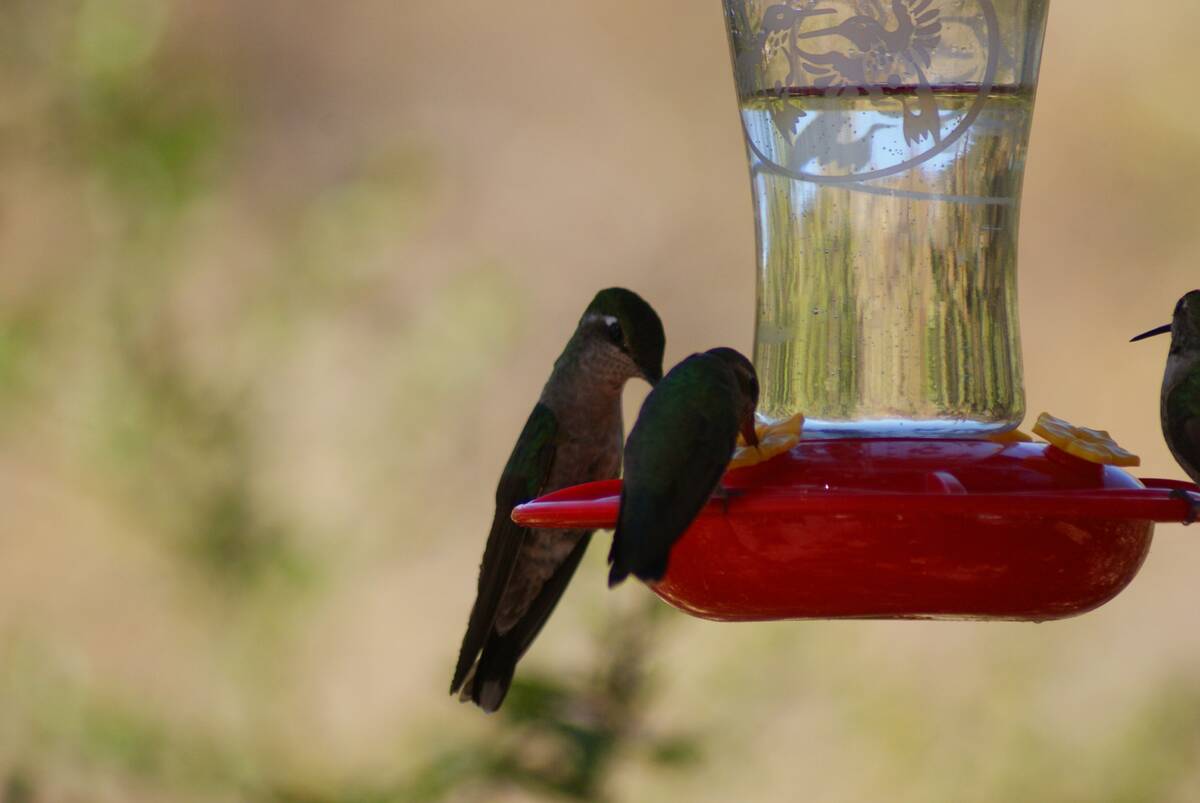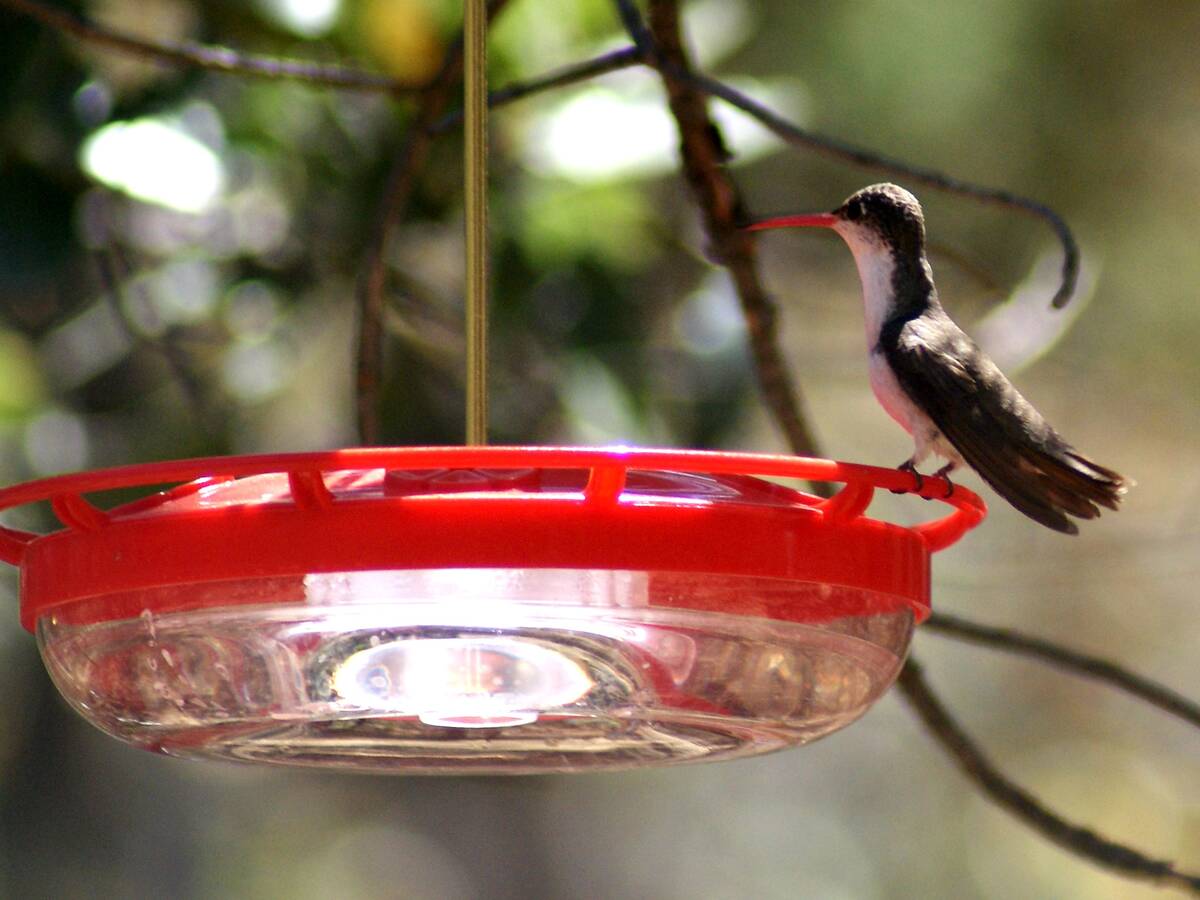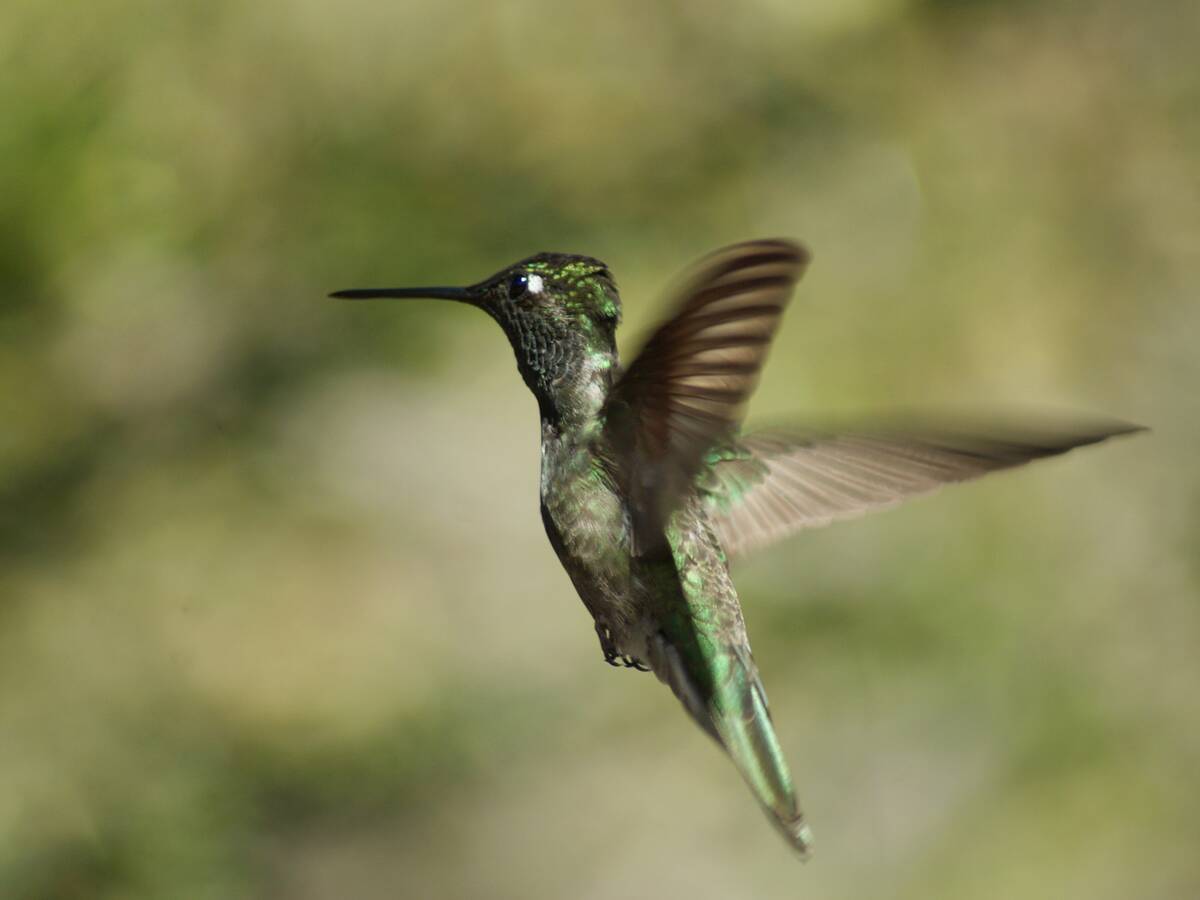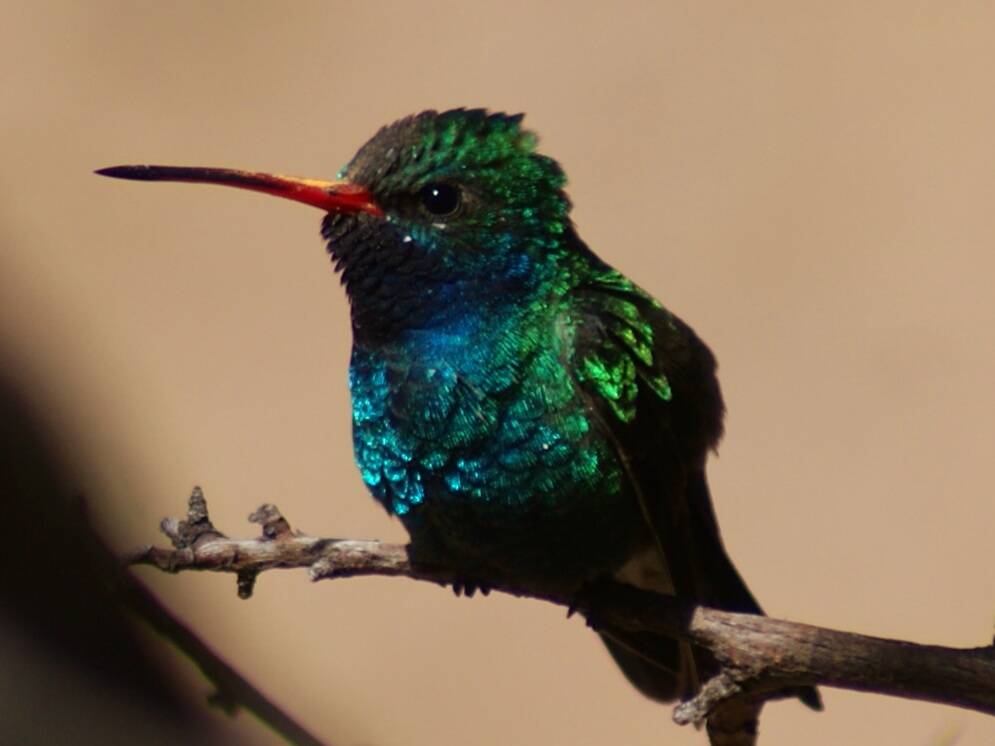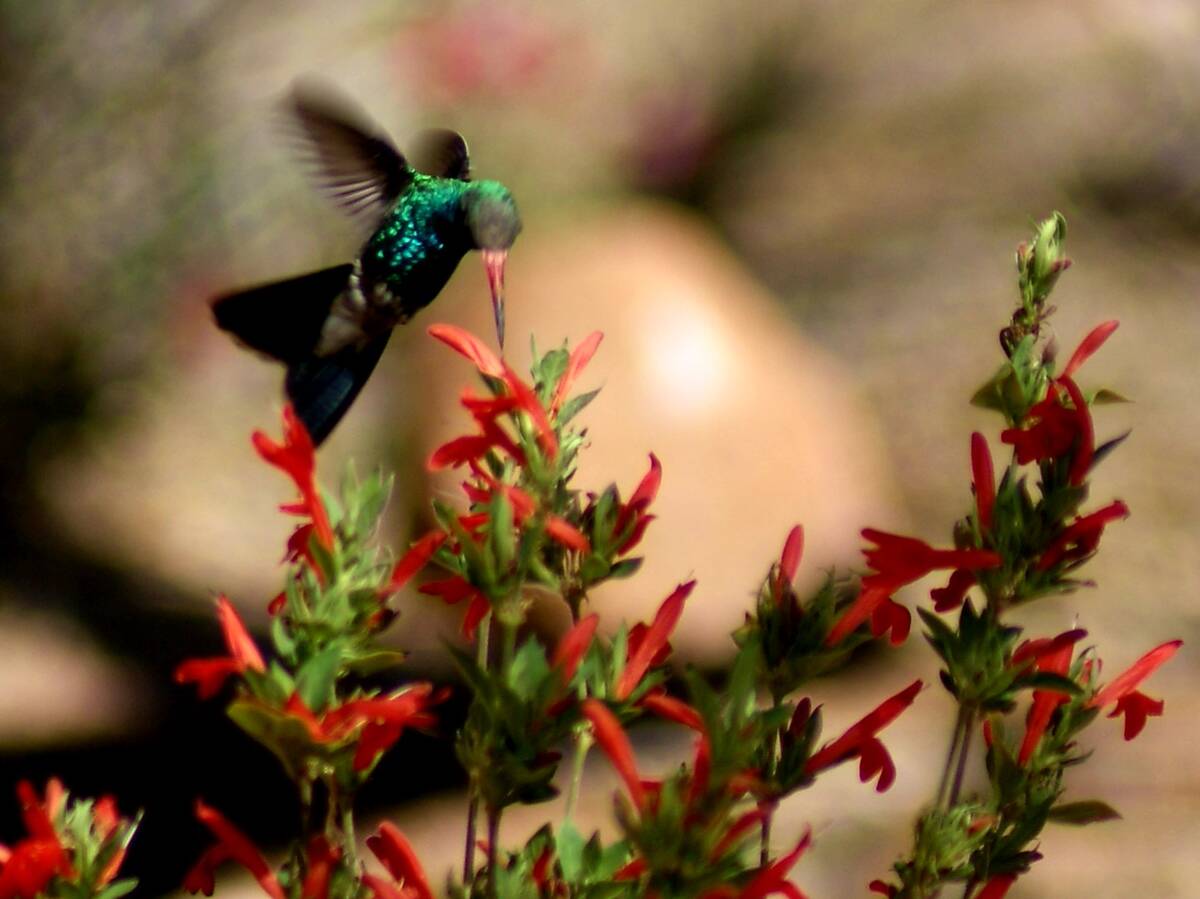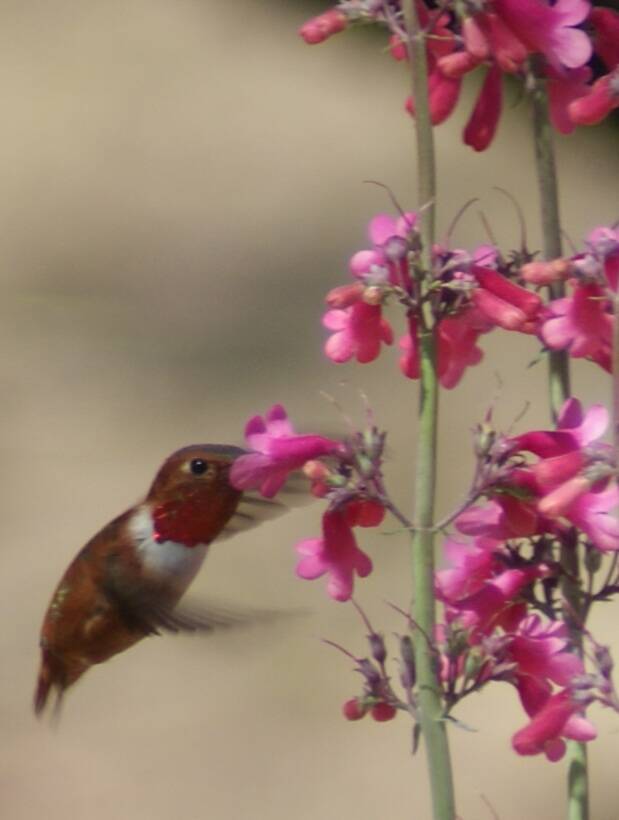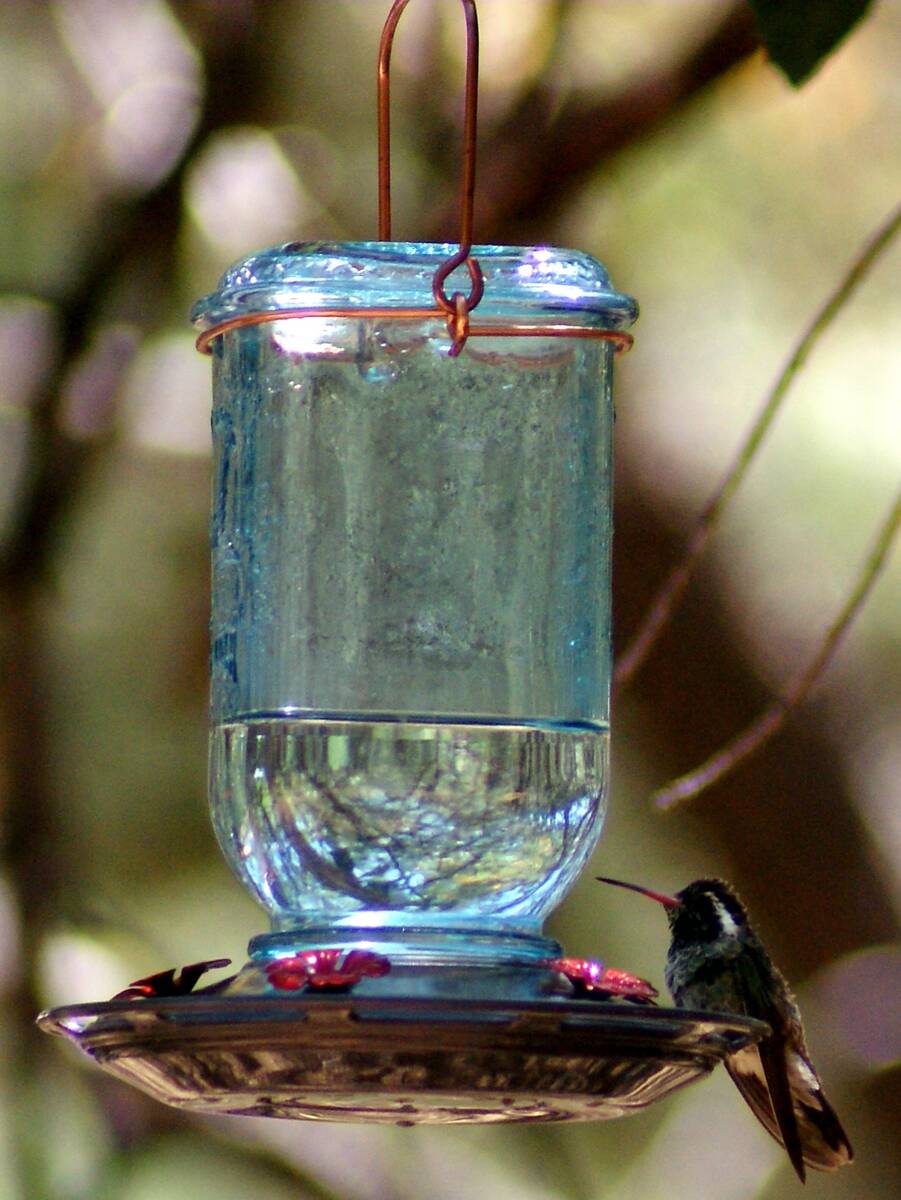Arizona’s mountains are best for seeing dozens of hummingbird types
Chasing iridescent and irresistibly charming hummingbirds is best done in the canyons of southeastern Arizona’s mountains, where it’s possible to spot a dozen different species of the petite, jewel-hued creatures.
Nowhere else in the country can claim as many hummingbird types as southeastern Arizona, and now’s a terrific time to plan a visit to the Huachuca, Santa Rita or Chiricahua mountains near Tucson. The months of April through August offer the best variety and greatest number of hummingbirds. Additionally, birding festivals in Sierra Vista (Aug. 3-6) and Tucson (Aug. 10-14) offer field trips to make it easier for visitors to add new birds to their lists of different species seen in a lifetime.
Summer may seem like an odd time for a desert visit, but monsoons in July and August have a cooling effect that typically creates a second spring of sorts for the area’s vegetation. And many of the best birds are found in the higher and cooler mountain elevations of sky islands rising from the floor of the Sonoran and Chihuahuan deserts. Canyon walls and mature trees in riparian areas provide shade, and the area’s scenery is rich with unique plant and animal diversity, for those who may not place birds at the top of their priority list.
Southeastern Arizona’s collection of hummingbirds not only includes year-round residents and those that nest and live there temporarily but also migrants passing through in spring and in August as they travel to and from their winter homes farther south. It all adds up to extra variety and volume — based in large part on bird-friendly sky island habitats; a geographical confluence of two deserts with connections to two massive mountain ranges; and the indifference of visiting Mexican birds toward the U.S./Mexico border.
When my family spent time in April in the Huachuca and Santa Rita mountains, we were lucky enough to spot 11 different hummingbirds: Anna’s, black-chinned, blue-throated mountain gem, broad-billed, broad-tailed, Costa’s, lucifer, Rivoli’s, rufous, violet-crowned and white-eared. Before driving from Las Vegas to the Tucson area, we did our Ebird research, and I studied the pages of my “Sibley Guide to Birds” in a desperate attempt to memorize distinctive details of the male hummingbirds I hoped to see during our four-day visit (lucifer has a curved beak, Rivoli’s and blue-throated mountain gem are considerably larger, broad-billed has a red beak, violet-crowned has a lot of white, and white-eared has white stripes where the ear should be). Few of those inexpert distinctions help with female hummingbirds, whose predominant color is green with white and brown highlights.
Brilliant blue-and-emerald broad-billed males and their drab but slightly more amazing female counterparts became daily companions on our self-guided field trips during the visit (one night in Sierra Vista and three nights in Tucson at reasonably priced hotels). We spotted the Rivoli’s hummingbirds flying and perching in Ramsey Canyon Preserve and at Santa Rita Lodge in Madera Canyon.
Wherever the hummingbirds flew, audacity followed. They’re mini, mighty and mesmerizing; petite packages of energy and inspiration. Their repertoire of flying tricks astounds: dipping, hovering, floating, diving, zipping — forward, backward and sideways. When watching them long enough as they drink nectar and defend territory, it’s easy to notice their tails acting as rudders to aid in precision flying.
We saw hummingbirds feeding from native flowers on hikes and in gardens, but we also benefited from some human magic to reach our tally of 11 different hummingbird species. That magic is called sweetened water, which fills feeders set up to support and lure hummingbirds within easy viewing distance of friendly visitors armed with binoculars and cameras.
At the Santa Rita Lodge in Madera Canyon, crowds gather to watch hummingbirds fly in to drink from sugar water feeders while other colorful birds like tanagers, orioles and woodpeckers eat seeds and suet from feeders below the crowded parking lot. Numbered signs hang above many feeders, and birders call out new finds using the numbers for clarification. Some visitors sit on benches while others stand with their attention unbroken, as if watching a heart-thumping basketball matchup at a sports bar (without drinks).
A version of backyard happy hour (also without drinks) plays out at other bird sanctuaries and private properties in southeastern Arizona. Three times we found ourselves in comfortable chairs watching the bird feeder drama unfold, and we added four uncommon hummingbirds to our trip list: the lucifer and blue-throated mountain gem at Ash Canyon Bird Sanctuary as well as the violet-crowned and white-eared at Ramsey Canyon Cabins.
Southeastern Arizona is too birdy to cover everything in just one visit. When we return we’ll hit some of the spots we missed, including canyons in the Chiricahuas and the Tucson Audubon’s Paton Center for Hummingbirds.
Here’s how my family handled our April trip:
Day 1: San Pedro House & Ash Canyon (1½-hour drive from Tucson)
San Pedro Riparian National Conservation Area is 9 miles east of Sierra Vista on Arizona Route 90. A riverside walk is accessible. Hummingbird banding managed by the Southeastern Arizona Bird Observatory happens most Saturday afternoons in late spring and during many summer weeks in the ramada behind the San Pedro House, which has a gift shop. Notable birds seen: first of many broad-billed hummingbirds, gray hawk, pyrrhuloxia, vermillion flycatcher, western screech owl, green-tailed towhee and leucistic white-crowned sparrow.
Ash Canyon Bird Sanctuary (30 minutes from San Pedro House)
Easy viewing opportunities and comfortable chairs make this a must-stop for anyone hoping to add to their hummingbird list. Notable birds seen: lucifer, blue-throated mountain gem and Costa’s hummingbirds; Scott’s orioles
Day 2: Ramsey Canyon & Hummingbird Gardens (1½-hour drive from Tucson)
Nature Conservancy’s Ramsey Canyon Preserve, 27 Ramsey Canyon Road, near Hereford. Pleasant walk with stately trees and informational signs explaining what’s incomparable about this place. Notable birds seen: Rivoli’s, Anna’s and black-chinned hummingbirds, hepatic tanager, black-throated gray warbler, bridled titmouse, painted redstart and yellow-eyed junco
Ramsey Canyon Cabins, 76 E. Ramsey Canyon Road, near Hereford. Comfortable chairs set up to view birds flying in and out to feed. Notable birds seen: white-eared, violet-crowned and broad-tailed hummingbirds, wild turkeys, pine siskins, Bewick’s wren and Hutton’s vireo
Kartchner Caverns State Park’s hummingbird garden, 2980 AZ-90, near Benson. Notable birds seen: rufous hummingbird, cactus wren and curve-billed thrasher
Day 3: Saguaro National Park (30-minute drive from Tucson)
Saguaro National Park — West, Tucson Mountain District; Red Hills Visitor Center; Desert Discovery Nature Trail; Valley View Trail Notable creatures seen: gilded flicker, curve-billed thrasher nest with babies, Sonoran spotted whiptail lizard; coyote
Day 4: Madera Canyon (45-minute drive from Tucson)
Proctor Road parking area with 1½-mile easy trail following seasonal creek and mostly under the shade of stunning trees such as the Mexican blue oak and Arizona white oak. Notable birds seen: Townsend’s, Lucy’s and black-throated gray warbler; northern cardinal
Santa Rita Lodge has a parking lot that’s typically busy with birders from across the country who have goals of watching and photographing hummingbirds as well as songbirds and specialties at the lodge’s many feeders. Notable birds seen: Rivoli’s and broad-billed hummingbirds, Scott’s oriole, hepatic tanager, lesser goldfinch, acorn woodpecker, Arizona woodpecker, Mexican jay
Carrie Nation Trail from Mount Wrightson parking area and trailheads at the end of Madera Canyon Road. We came for the chance to see and hear the elegant trogon and stayed to hike in the splendor of its home.
Notable creatures seen: elegant trogon; red-faced warbler; ridge-nosed rattlesnake; white-tailed deer
My annual America the Beautiful federal lands pass covered fees in Saguaro National Park as well as National Forest Service- and BLM-managed areas. Otherwise, fees at most federally managed areas averaged $8. Most bird sanctuaries and private properties seek donations to help offset the cost of feeding the birds, with at least one location requesting $10 per person.



